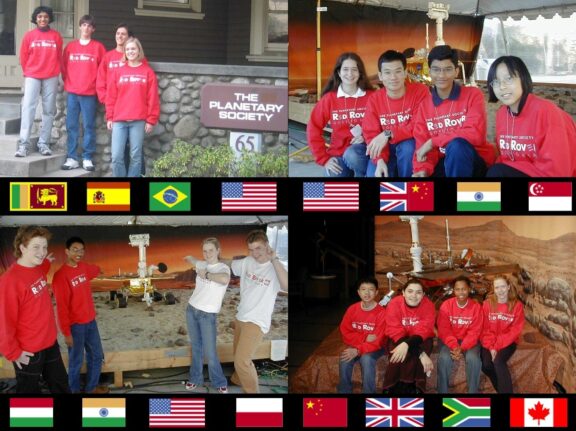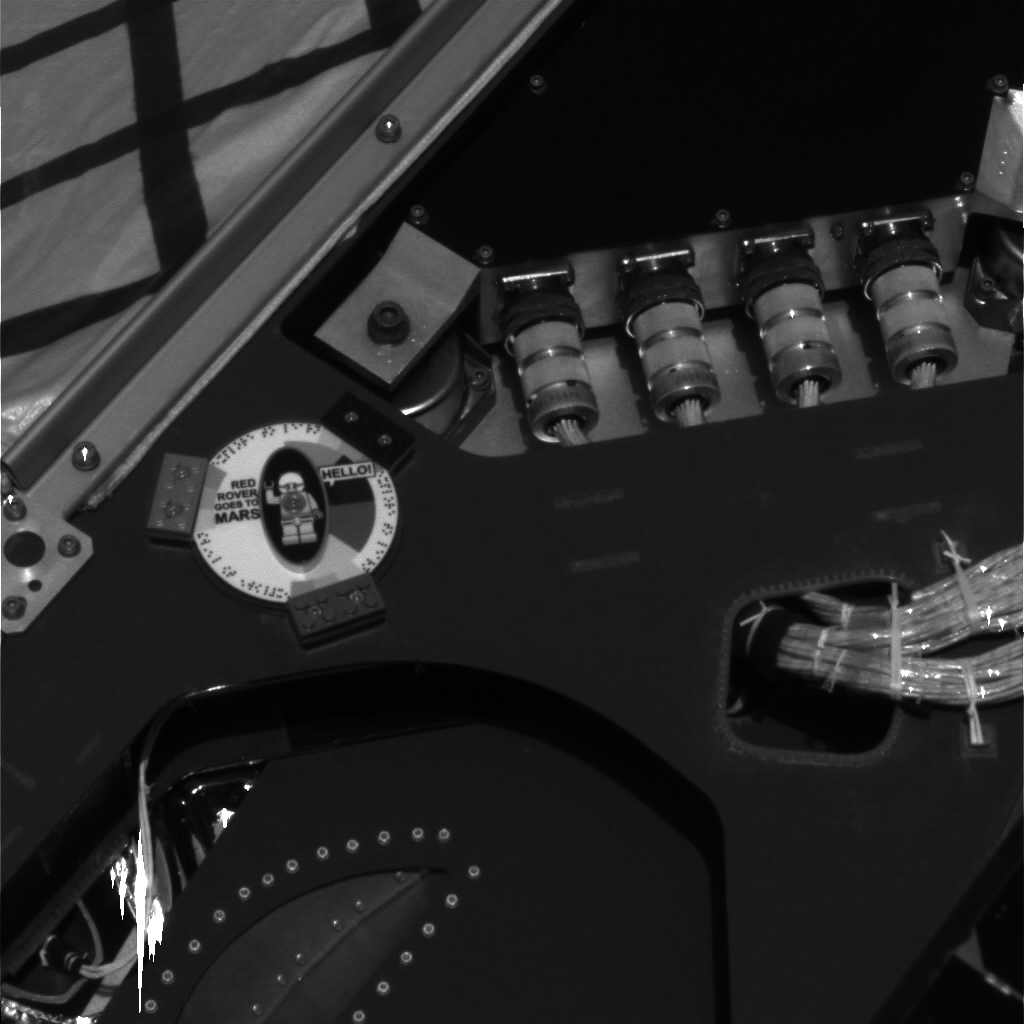Red Rover Goes to Mars, 20 years later

Written by
Jason Davis
March 12, 2024
Twenty years ago, NASA’s Opportunity rover landed on Mars. Its twin, Spirit, had reached the surface three weeks earlier. The two robotic field geologists would usher in a new era of Mars exploration and confirm liquid water once flowed on the planet’s surface.
At NASA’s Jet Propulsion Laboratory in Pasadena, California, an international group of high schoolers watched Opportunity’s dramatic descent alongside scientists and engineers working on the mission. The students were part of The Planetary Society’s Red Rover Goes to Mars program, a partnership with LEGO to engage and educate the public, and give students opportunities to participate in Mars missions.
Among the “student astronauts,” as they were called, was Abigail Fraeman. After the celebration of a successful landing and a raucous press conference, she and other participants watched with the science team as the rover’s first images arrived, showing it had come to a rest inside a shallow crater.
“Those images just hooked me completely, because they showed a picture of Mars that was unlike any other picture of Mars we'd ever seen,” said Fraeman recently. “It really showed me that Mars is a place we can explore, and there's so much we haven't seen.”
The experience convinced Fraeman to pursue a career in space. In the time it took her to earn a Ph.D. in planetary science, Opportunity was still exploring Mars on what became a 14-year mission, even though the rover was only supposed to last 90 days. In a full-circle moment, Fraeman became the deputy project scientist for the Opportunity mission. Now, she is the deputy project scientist for the Curiosity mission.
“It's not an exaggeration to say that this program literally changed my life,” she said of Red Rover Goes to Mars.
Quotes in this article were drawn from an interview on Planetary Radio and have been edited for clarity and brevity.

Spirit and Opportunity
The Red Rover Goes to Mars program encompassed more than student engagement. It included a contest to name the rovers, mini-DVDs that accompanied them to Mars, and a variety of other public outreach activities.
“It took a lot of effort over many years for The Planetary Society to execute the whole program,” said Planetary Society Chief Scientist Bruce Betts, who managed the program in its later years.
The Planetary Society and LEGO collected student essays for a contest to name the rovers that drew nearly 10,000 entries. A nine-year-old named Sofi Collins wrote the winning essay.
"I used to live in an orphanage,” her entry read. “It was dark and cold and lonely. At night, I looked up at the sparkly sky and felt better. I dreamed I could fly there. In America, I can make all my dreams come true. Thank you for the 'Spirit' and the 'Opportunity.'"

The Society also provided the mission with two silica DVDs containing the names of 4 million well-wishers collected by NASA. Each DVD was mounted to a rover’s landing platform with aluminum LEGO bricks and stamped with the image of a LEGO astronaut. The two astronauts, Biff Starling and Sandy Moondust, transmitted fictional diaries of their experiences back to Earth.
Both Spirit and Opportunity imaged the DVDs after rolling off their landing platform. The DVDs had secret codes for Earthlings to decipher.

The student participation portion of the program was more than just being at JPL when the rovers landed. In 2001, students went to Malin Space Systems in San Diego, California to operate the camera on the Mars Global Surveyor spacecraft. In 2002, they went to JPL to operate a prototype rover named FIDO, which was a scaled-down version of the Mars Exploration Rovers.
From student astronaut to leading scientist
Sixteen-year-old Courtney Dressing was at JPL when Spirit landed. As a child, she had wanted to be an astronaut. Now, as a member of the Red Rover Goes to Mars program, she was watching scientists prepare for what was destined to become a beloved, long-lasting Mars mission.
“I remember looking at the map where Spirit was supposed to land,” she said. “As the scientists and engineers discussed where they thought the rover would end up, we also took notes about what we saw and we wrote blog entries to share with the world about our experiences.”
Later, she helped calibrate images of the sundial on the rover and track dust accumulation as the mission progressed.
The experience had a major impact on her career. She earned her undergraduate and graduate degrees in astrophysics, and her Ph.D. in astronomy and astrophysics. She is now an assistant professor at the University of California, Berkeley, specializing in exoplanets.
“I think it's fair to say that my career would not be what it has been without having been a Red Rover Goes to Mars student astronaut,” Dressing said.
She currently co-leads the science team for NASA’s next large telescope, called the Habitable Worlds Observatory. HWO is often referred to as a “Super Hubble'' telescope. It will be designed to directly image 25 potentially habitable worlds, probing their atmospheres for signs of life.

The Red Rover legacy
Fraeman said part of the Red Rover program’s legacy is showing her the importance of inspiration and public outreach.
“It definitely showed me the power of outreach, and that it can literally change somebody's life and set the course of their life,” she said. “It really instills in me how important it is to share what we're doing and the good that can come from that.”
She advised students seeking their own careers in space exploration to follow their passions and find a path that works for them.
“There are so many ways to be involved. There's the path that I took, which is studying science and getting a career as a scientist at NASA, but there are also career paths in communication, sharing, and teaching,” she said.
Dressing agreed on the importance of science communication and the value of finding ways to get students involved early.
“My experience as a student astronaut definitely caused me to think more closely about science communication,” she said. “I really appreciated the chance to be behind the scenes, and now that I'm in more of a leadership role, I want to be sure that we bring in students and amateurs from around the world to participate in these missions.”
She is bringing that philosophy to her work on the next-generation telescope that could find signs of life on another world.
“One of the things I'm most excited about for the Habitable Worlds Observatory is that we have a whole group that's devoted to mentorship and communication and diversity, equity, inclusion, and accessibility,” said Dressing. “We want to be sure that this really is everybody's mission.”
Breakthrough research starts with YOU!
Your support will empower the next round of STEP grant winners. Make your gift today to fund tomorrow's promising science and technology projects.
Donate

 Explore Worlds
Explore Worlds Find Life
Find Life Defend Earth
Defend Earth

